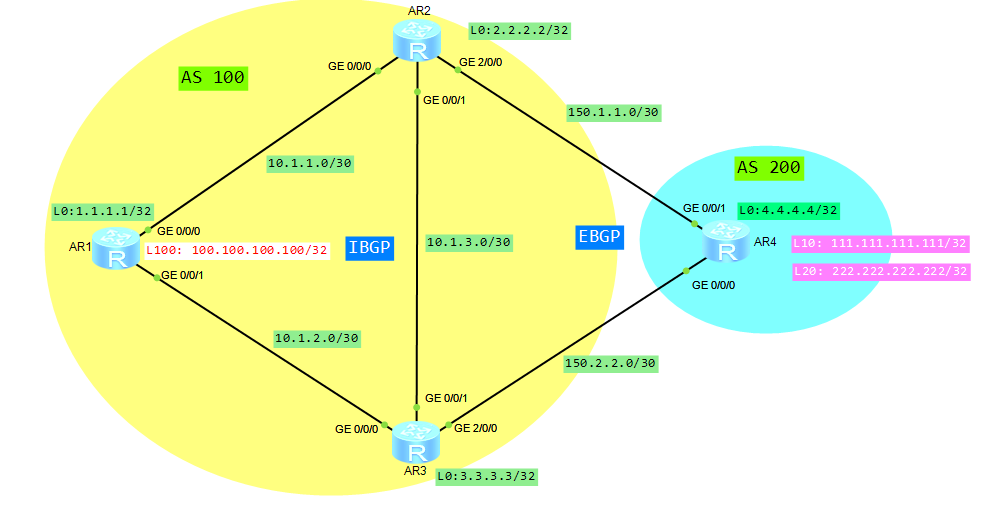Let’s keep going and try to configure BGP local preference attribute using route-policy.
We can take full advantage of topology and configuration from the last post: “BGP default local preference in Huawei CLI“.
- Assure full connectivity based on the attached topology (look at the previous article).
- Configure Loopback 10 and Loopback 20 on router AR4.
- Import all Loopback interfaces of router AR4 to BGP.
 Labnario Huawei From Scratch
Labnario Huawei From Scratch

